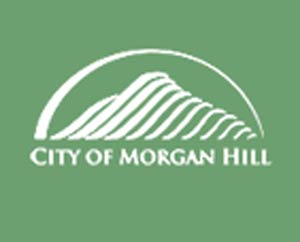In an effort to provide local residents with the knowledge and
tools to assist each other in the event of an earthquake or other
major emergency that could render 911 useless for up to 72 hours,
the city of Morgan Hill will launch the
”
Map Your Neighborhood
”
program Saturday.
In an effort to provide local residents with the knowledge and tools to assist each other in the event of an earthquake or other major emergency that could render 911 useless for up to 72 hours, the city of Morgan Hill will launch the “Map Your Neighborhood” program Saturday.
Organizers of the program say without phone lines or electricity, and an increased threat of fires or flooding, the best way for neighbors to stay alive following a disaster is by helping and informing each other – and knowing each other a little bit before a disaster strikes.
“This program has been proven (to work),” said Sherry Purser, a Morgan Hill resident and volunteer with the city’s Community Emergency Response Team and the office of emergency services. “It’s so easy, and it takes such a short period of time (to prepare).”
The program will be launched 9 a.m. Saturday, at a community meeting at the Morgan Hill Community Playhouse, 17090 Monterey Road. The meeting was intentionally scheduled for Sept. 11, to honor the victims of terrorist attacks that occurred nine years ago on the same day. City officials will give a presentation of how Map Your Neighborhood works, and distribute materials related to the program.
The city was able to implement Map Your Neighborhood, a nine-step emergency response plan, with a grant from the office of homeland security.
The program will be administered block-by-block throughout the city, in neighborhoods that are willing to participate. One “facilitator” who lives on each block would be chosen to organize up to 20 households to participate together. The program includes distribution of a brochure that walks residents through nine steps that neighborhoods should do in order to prepare for an emergency.
The brochure advises that each neighborhood should have a pre-determined gathering place after a disaster, and know where the gas and water shutoff valves are in each house. “In the (1994) Northridge earthquake (in southern California), most fires were caused by leaking gas lines,” Purser said.
The guide also includes a grid on which residents can draw a map of their block, indicating meeting places and the locations of utility switches. And it includes a sheet that says “OK” on one side, and “Help” on the other, which residents should place in their front windows after a disaster indicating priorities for who should be assisted first.
“This will help the fire department, because they’ll already know if people are OK,” Purser said.
The city’s goal is to implement Map Your Neighborhood in every neighborhood throughout the city, which Purser acknowledged will be a challenge.
The program won’t be officially launched for general public participation until Saturday, but a trial run has already begun at the Woodland Estates senior citizens’ community in south Morgan Hill.
Woodland Estates resident Burdetta Moore said she has attended an initial block meeting, which she described as “successful.” She said nine of the 12 homes on her block were represented at the meeting, which was more than she expected.
“The people are interested,” Moore said. An added advantage about the program is it allows neighbors to get to know each other, as one of the steps is to determine, before a disaster strikes, who on the block might be a doctor, plumber, electrician, or other expert whose skills can be useful in an emergency. It also advises neighbors to know who is in possession of key supplies such as camping equipment, generators and tools.
“I learned a lot of things I didn’t know (about my block),” Moore said. “I found out who had ladders and rope, and wrenches and construction supplies. One lady knits, and she has a lot of extra blankets.”








